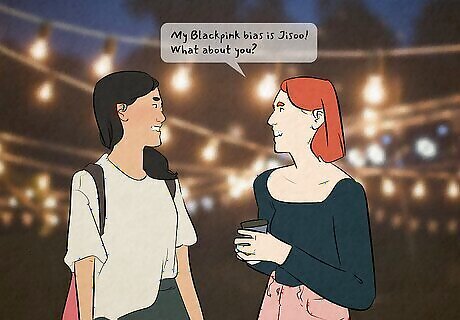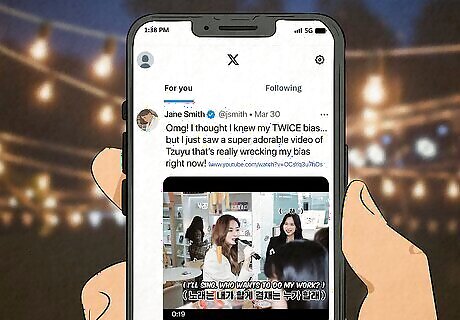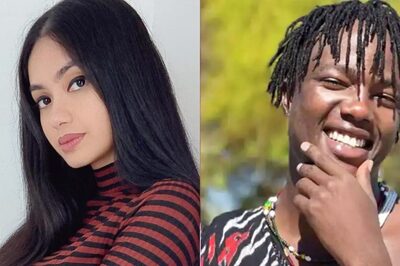
views
What does it mean to have a “bias” in K-pop?

A “bias” is your favorite member in a K-pop group. All in all, it’s super simple—saying a particular K-pop idol is your “bias” is the same as saying they’re your favorite one (in that group, not necessarily out of all K-pop idols). “Bias” is a super common term among K-pop fans that took off in the 2010s, though its exact origins are unclear. Example: “My Blackpink bias is Jisoo! What about you?” K-pop fans on X (Twitter), TikTok, Instagram, and other social media platforms use “bias” to find other people who love the same idols they do. The plain English definition of “bias” is negative, referring to prejudice in favor of one thing over another. By comparison, K-pop’s “bias” is nothing but positivity!
Types of K-pop Biases

Ultimate biasYour “ultimate bias” (or “ult bias,” as it’s sometimes abbreviated) is your favorite K-pop idol, period—out of all the idols out there, not just a single group. Another way of looking at “ult bias” is your favorite bias from the many biases you have. Sometimes, if they have multiple biases in a group, a person might use “ult bias” to refer to their favorite of those biases. Example: “It’s so hard to pick an ultimate…I have so many biases! I think my ult Stray Kids bias is Hyunjin.”

Bias groupYour “bias group” is, very simply, your favorite K-pop group. Using this term is just another way of pointing out which K-pop group you have a special love for, more so than any other! Of course, it’s okay to have more than one bias group, just like you might have more than one bias. Example: “I hate to choose…but I think my bias group is BTS!”

Bias wreckerA “bias wrecker” is an idol who wasn’t your bias before, but is really starting to test your love for your current bias. It’s like saying they’re winning your affections away from your old fave, or super close to becoming your new favorite. Your “bias wrecker” can also be your second-favorite bias in a K-pop group. Example: “Omg! I thought I knew my TWICE bias…but I just saw a super adorable video of Tzuyu that’s really wrecking my bias right now!”
How to Choose Your Bias

No, there isn’t an official process to choosing your bias)—but if you’re struggling, there are definitely ways to narrow the choices down! First things first: think about what type of K-pop performer you’re drawn to, deep down. An incredible vocalist? A first-rate dancer? A super-talented rapper? Then, try the following: Watch more K-pop content. Find content featuring each member in a group—and not just performances. Look for interviews, behind-the-scenes videos, and appearances on TV shows. You can learn more about them this way! Consider how they make you feel. Stanning a K-pop idol is a bit like having a crush. Does an idol make you smile? Laugh? Do you love watching videos of them or jump to their defense when others criticize? That’s your bias. Make a bias list. That’s right: list out all the biases you’ve collected across various K-pop groups (to keep track of them, if nothing else). Avoid overthinking. At the end of the day, choosing a bias isn’t life or death. It’s okay to change your mind later, or have a lot of them.
Can you have more than one bias?

Absolutely; there are no restrictions on having K-pop biases. As mentioned above, you can have as many biases as you want (and, honestly, as many biases as you end up naturally growing to love along your K-pop journey). In fact, there’s no rule saying you can’t have multiple ultimate biases—once again, the concept of a bias is totally subjective. Have five biases, ten, fifty—it’s all valid!
More Essential K-pop Vocabulary
AegyoIn Korean, “aegyo” is a combination of “love” (ae) and “beautiful” (gyo). In K–pop terms, it describes the most adorable member of the group—someone universally perceived as cute, often through their facial features and expressions, higher-pitched voice, and “cute” hand gestures (like forming hearts with their fingers or using their hands to frame their face). For example, ENHYPEN's Sunoo and TWICE’s Sana are both considered “aegyo.”
ComebackA “comeback” in K-pop basically refers to an idol or group releasing a new song. Non-K-pop fans might associate a comeback with a musician making their return to music after a long time, but that’s not the case here; a K-pop comeback is purely about the launch of new music. Comebacks usually involve a concept or theme incorporated into the group’s subsequent performances.
DebutIn K-pop, “debut” refers to a K-pop trainee’s transition into a professional performer (idol). A debut can be the idol’s first public performance or music release (like an official single). A “trainee,” meanwhile, is a student who auditioned or was scouted by an entertainment company and is training to debut as an idol—either as a soloist or in a group.
FanchantFanchants are the phrases that fans of an idol or group will shout before a performance. They typically incorporate group members’ names, lyrics from songs, and other words specific to the K-pop group in question.
IdolK-pop idols are the performers that make up each group. “Idol” is just another term for any K-pop star; it generally applies to artists who have debuted, and therefore aren’t trainees at an entertainment agency anymore.
LeaderIn the world of K-pop, a leader is responsible for guiding, organizing, and representing the rest of their group. They liaise between the group and the entertainment agency and often speak on the group’s behalf when needed (at award shows, for example, or during interviews). For example, the leader of BTS is RM. A “leader” isn’t the same thing as the “main” or “lead” of a group. One member can have the role of both “leader” and “lead,” but the two roles don’t mean the same thing.
LeadThe “lead” in a K-pop group (typically used in labels like Lead Vocals, Lead Rapper, or Lead Dancer) is the second-best to the “main.” So, if one member is the “main” (primary) vocalist, the “lead” is essentially the secondary vocalist in the group.
MainAs mentioned above, the “main” in a K-pop group describes the person who has the best skills in something (typically used in labels like Main Vocals, Main Rapper, and Main Dancer). For instance, being the main vocalist in a group means you’re the best singer!
Maknae“Maknae” is a Korean word meaning “youngest sibling.” So, in a K-pop girl or boy band, the “maknae” is simply the youngest member. The related term “golden maknae” describes a maknae who’s highly skilled in all aspects of performance—including singing, dancing, and visuals. For instance, Blackpink’s Lisa is often called a golden maknae!
Visual “Visual” is a term for the most conventionally attractive member of a K-pop group (based on Korea’s beauty standards). American fans tend to find this term controversial, since beauty is such a subjective thing, and fans don’t necessarily agree on the visual of every K-pop group. Nonetheless, entertainment companies do typically put a “visual” in each K-pop group.




















Comments
0 comment